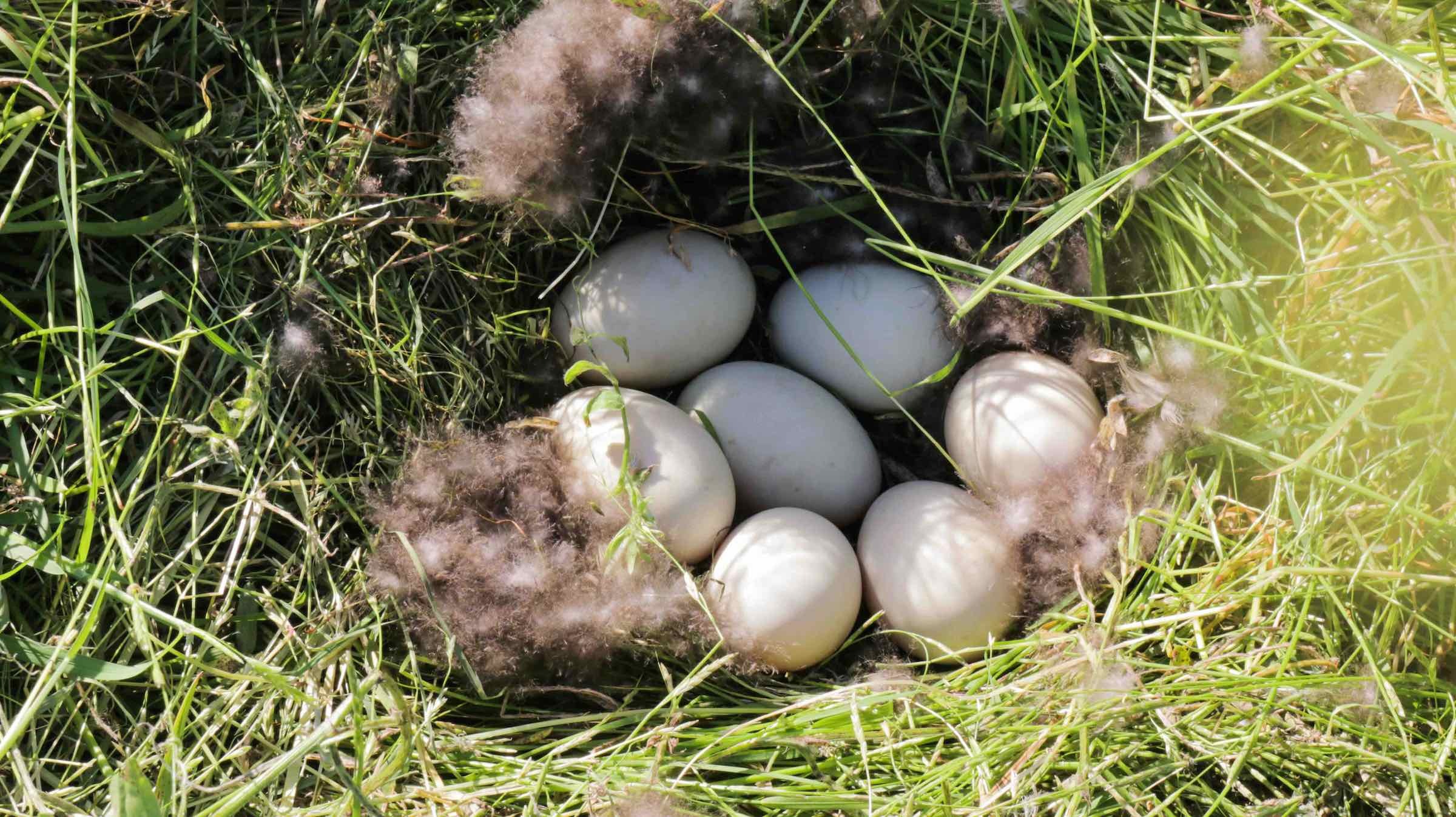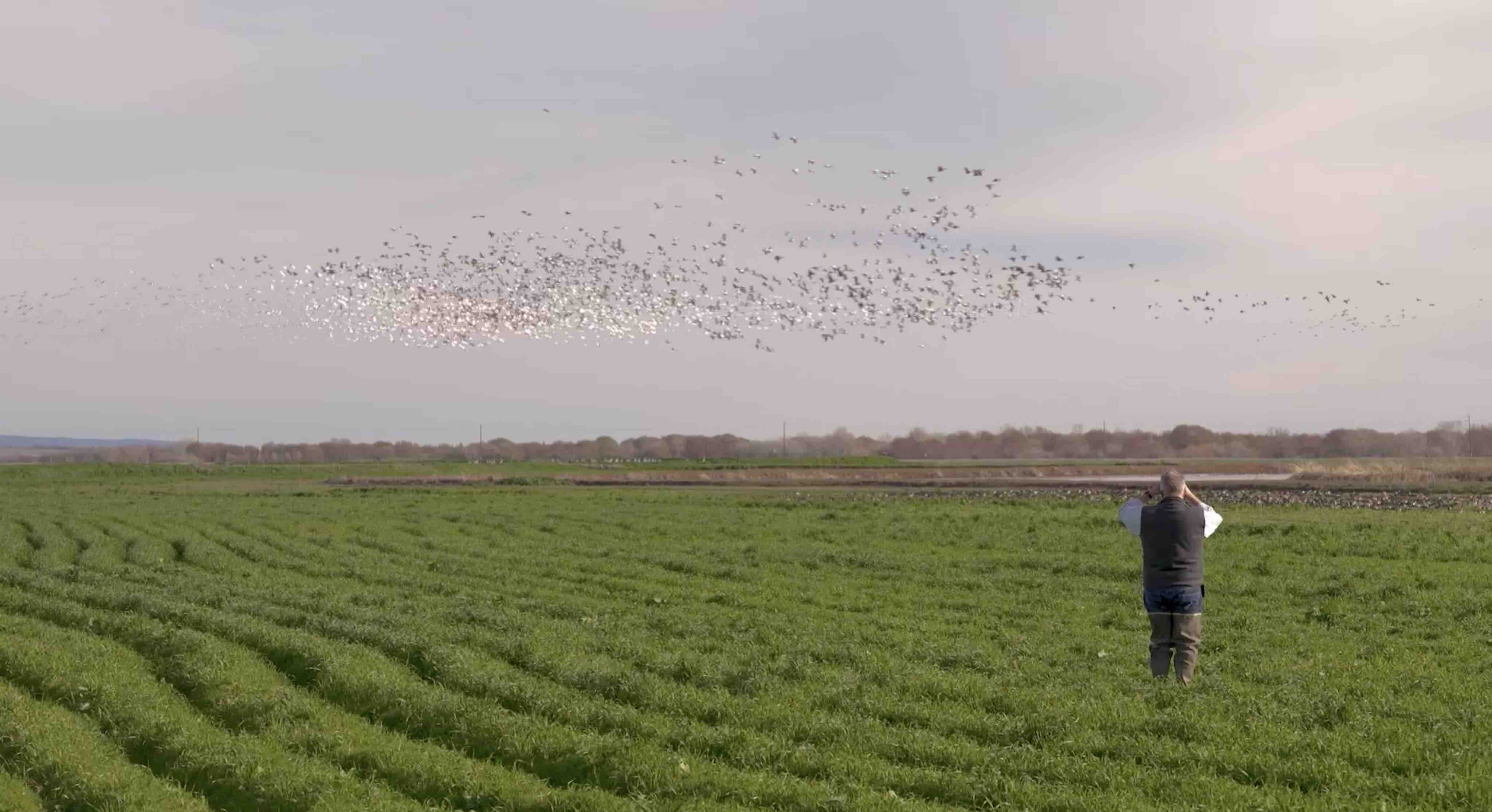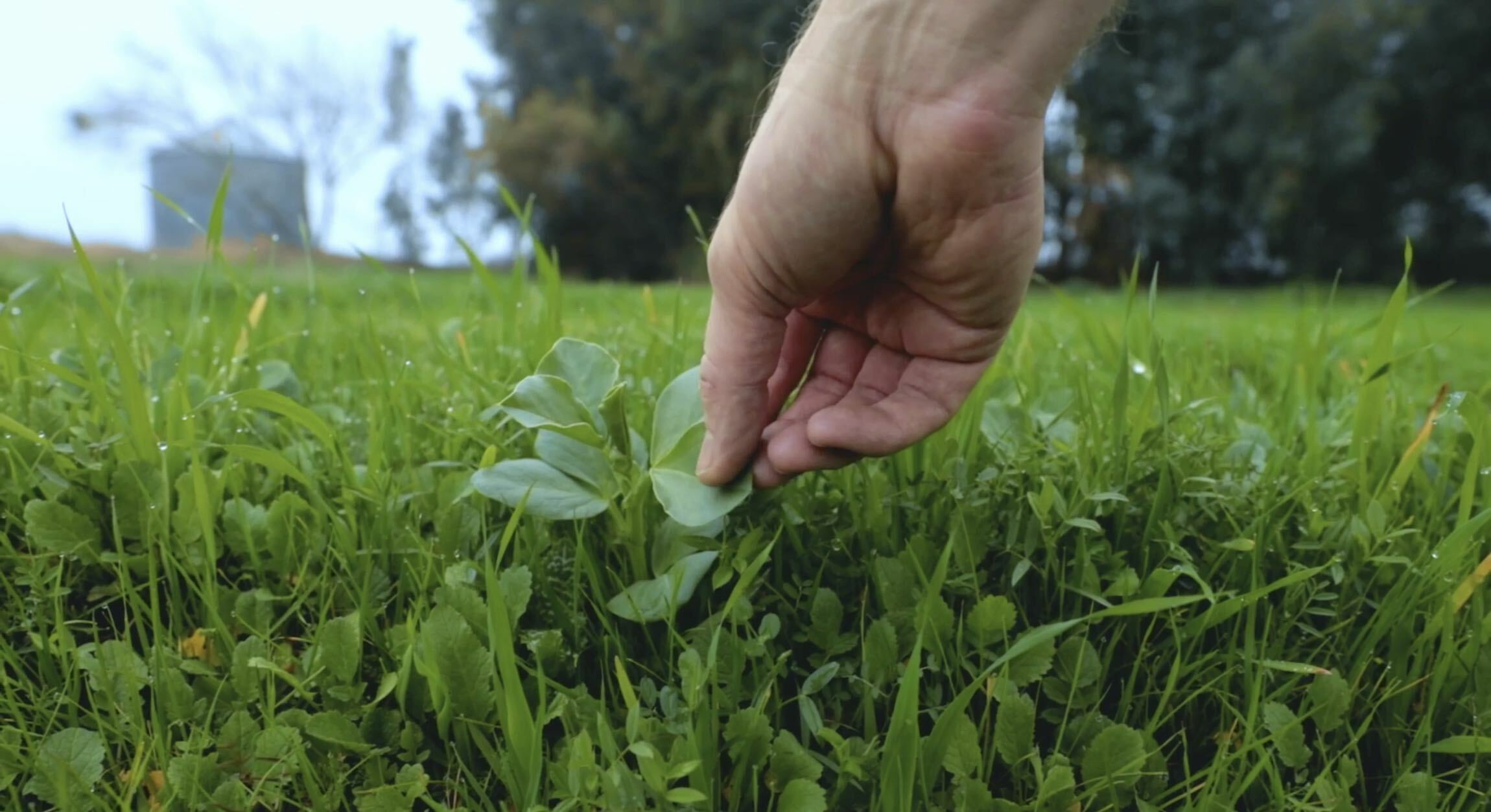
A founding promise...
Lundberg Family Farms was founded on a promise to work in partnership with nature. In 1937, our founding fore-farmers—Albert, Frances, and their four young sons—left Nebraska in the wake of the Dust Bowl. They saw how short-sighted farming techniques stripped the land of its topsoil. So, when they moved to California, they decided to do things differently by working in partnership with nature, not against it. We’ve been following in their footsteps ever since, growing wholesome, great-tasting rice while protecting the place we call home. Today, one of our most important partnerships is with wintering waterfowl.

Each year, more than a billion birds travel the Pacific Flyway, a flight path that stretches from the Arctic to the west coast of Mexico and the Rocky Mountains to the Pacific Ocean. Staggering as these numbers may seem, according to Audubon: “these birds are only a fraction of those that used the flyway a century ago. Habitat loss, water shortages, diminishing food sources, and climate change all threaten the birds of the Pacific Flyway.”
Our farms are located within California’s Central Valley, which is not only part of the Pacific Flyway, but also one of the most important and threatened waterfowl habitats on the continent. Our region’s once-abundant wetlands—and the hundreds of species who depend on them—have been disappearing for decades. After the Gold Rush, people moved into this area and built dams and levees to protect growing communities from floods. Today, 95% of the wetlands in California’s Central Valley are gone. But here's a "grain" of truth: Rice fields replicate California's once-abundant wetlands!
Here’s a “grain” of truth: Rice fields replicate California’s once-abundant wetlands!
Each winter, we flood a portion of our fields to provide habitat for ducks, geese, swans, sandhill cranes, shorebirds, and other waterfowl. When our family first started flooding fields after rice harvest in the late 1970s and early 1980s, the birds started coming back by the thousands!
A win-win-win of working in partnership with nature!
We’re happy to share our home with wintering waterfowl. In fact, we consider it a win-win-win of working in partnership with nature! Rice fields provide more than 60% of their nutrition in the Central Valley, plus a place to rest while they travel the Pacific Flyway. But the birds aren’t the only ones who benefit from this partnership. Their feet also put nutrient-rich rice straw in contact with the soil, which decomposes the rice straw and turns it into mulch for the next year’s crop. And once the birds fly away, we return the water to rivers and streams, where zooplankton from the fields support endangered salmon populations!
Our partnership with nature doesn't end there...
During the winter, we also grow cover crops, like oats, vetch, and fava beans. Simply put, cover crops are crops that we grow for the soil instead of the table. Like green juice for the ground, they restore nutrients to the soil, sequester carbon, reduce weeds, prevent erosion, and provide habitat for wildlife!

Because ducks have lost a lot of natural breeding habitat, they often nest in our cover crops. Come spring, we check to see if ducks have started nesting in the fields. If so, before we start our tractors to prep the fields for rice planting, we work with organizations like California Waterfowl to rescue eggs from each and every field in which ducks are nesting—up to thousands of acres per year!
With help from our friends at California Waterfowl, we affix cans to a sturdy rope and attach it to two side by side ATVs. Then we drive the ATVs alongside the field, dragging the rope back and forth through the field to flush the hens off their nests. When a hen shoots out of the cover crop, we carefully tread into the field to find and uncover her nest—like a giant Easter egg hunt! We carefully collect the eggs in cartons, rescuing them from the tractor’s path and transferring them to a local hatchery to be incubated. Once the ducklings hatch, they are raised to five weeks of age, banded, and released back into the wild.
Over the years, more than 30,000 ducklings have been rescued from our fields!
You see, choosing organic not only means saying “no” to chemicals and GMOs; it also means saying “yes” to biodiversity, which is part of the organic system! The Dust Bowl taught our family that short-sighted farming techniques have far-reaching consequences. So we lead with a long view of organic farming by treating the land like a member of the family and tending to soil, air, water, and wildlife as carefully as our crops.
It’s all part of our promise to work in partnership with nature, even if it leaves duckling droppings on our boots!
Hungry for more?
Dig into our commitment to growing cover crops and find out how we prioritize sustainability from the ground up so we can keep growing together for generations to come!

Meet and Greet and Eat at
Lundberg Social Media Links